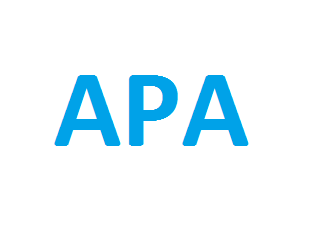
The Academic Perspective Procedia publishes Academic Platform symposiums papers as three volumes in a year. DOI number is given to all of our papers.
Publisher : Academic Perspective
Journal DOI : 10.33793/acperpro
Journal eISSN : 2667-5862
Upgrading Seismic Behaviors of R/C Frames with Shaped Memory Alloys Based Braces
Ali Reza Allahverdizade;Serenay Kara;Savaş Erdem
1159
611
Abstract
Intelligent systems in structural engineering are systems that are capable of automatically adapting structural behavior in response to instantaneous loads, thereby ensuring the safety of extended structural life and performance. One of the new technologies that makes it possible to achieve these goals is the production and development of smart materials. Examples of these smart materials used in structural engineering include piezo-ceramics, magnetorheological fluids, electrorheological fluids, and form-memory alloys. Shaped Memory Alloys (SMAs) are new materials that have been used in various fields of science and engineering in recent decades. In recent years, these materials attracted the attention of researchers in the field of building and earthquake engineering due to their properties such as high damping capacity, low permanent displacement and structural fatigue resistance. One of the application areas of these materials is that they are used as a brace in the structures, so the research results have shown the acceptable performance and operability of such structural systems. In this study, shape memory bracelets and steel bracelets installed as structural brackets were used as a lateral load system in the seismic improvement of concrete bending frames and factors such as residual displacement and base shear in these two load-bearing systems are compared. The model under studying is a 6-story frame that has been subjected to time history analysis. SeismoStruct software was used to analyze the model.
Keywords:
Shape memory alloys, permanent strain, seismic retrofitting, SMA braced frame, dynamic time history analysis
References
[1] Alam MS, Yousef MA, Nehdi M (2007) “Utilizing Shape Memory Alloys to Enhance the Performance and Safety of Civil İnfrastructure: A Review”, Canadian Journal of Civil Engineering, NRC, Canada, September, 34: 1075-1086.
[2] Auricchio F, Fugazza D, Desroches R (2006) “Earthquake Performance of Steel Frames with Nitinol Braces”, Journal of Earthquake Engineering, 1 March, 10: 1-22.
[3] Auricchio F, Sacco E (1997) “A One-Dimensional Model for Super-elastic Shape-Memory Alloys with Different Elastic Properties Between Austenite and Martensite”, İnternational Journal of Non-Linear Mechanics, 1 June, 32: 1101-1114.
[4] Auricchio F, Taylor R. L, Lubliner R. L (1997) “Shape-Memory Alloys: Macromodelling and Numerical Simulations of the Super-Elastic Behavior”, Computer Methods in Applied Mechanics and Engineering, July, 146: 281-312.
[5] Ocel J, Desroches R, Leon R, Hess W.G, Krumme R, Hayes J.R, Sweeney S (2004) “Steel Beam-Column Connections Using Shape Memory Alloys”, Engineering Structures Journal of Structural Engineering, 130: 732-740.
[6] Dolce M, Cardone D, Marnetto R (2001) “SMA Re-Centering Devices for Seismic Isolation of Civil Structures”, Proceeding SPIE – the İnternational Society for Optical Engineering, 4330: 238-249.
[7] Dolce M, Cardone D, Marnetto R, (2000) “Implementation and Testing of Passive Control Devices Based on Shape Memory Alloys”, Earthquake Engineering and Structural Dynamics, 29: 945-68.
[8] Fugazza D, (2003) Shape memory alloy devices in earthquake engineering: mechanical properties, constitutive modeling and numerical simulations, MSc Thesis, Rose School, Pavia, Italy.
[9] Ghaffarzadeh H, Maheri MR (2006) “Mechanical Compression Release Device in Steel Bracing System for Retrofitting RC Frames”, Earthquake Engineering and Engineering Vibration, June, 5(1): 151-158.
[10] Krstulovic-Opara N, Nau J, Wriggers P (2003) “Self-Actuating SMA-HPFRC Fuses for Auto-Adaptive
[11] Composite Structures”, Computer-Aided Civil and İnfrastructure Engineering, 18(1), 78-94.
[12] Liao W, Mo Y.L (2006) “Shake Table Tests of RC Frame with Shape Memory Alloy Bracing Bars”, 4th İnternational Conference on Earthquake Engineering, Taipei, Taiwan, 12-13 October, pp. No.90.
[13] Otero K (2004) İntelligent Reinforced Concrete Structures Using Shape Memory Alloys, Msc Thesis, University of Houston, USA.
[14] Seismosoft [2014] "Seismostruct V7.0 – A Computer Program for Static and Dynamic Nonlinear Analysis of Framed Structures," Available From http://www.seismosoft.com.
[15] Sun L M (1991) Semi-Analytical Modeling of the Tuned Liquid Damper with Emphasis on Damping of Liquid Sloshing, Ph.D. Dissertation, University of Tokyo, Tokyo, Japan.
[16] Kowalczyk and Nizankowski, 2017, Comparative Analysis Of Machinability Of Nitinol Alloy Using Weighted Radar Diagram, Management and Production Engineering Review Volume 8 – Nu.4 December 2017 pp. 77-81.
Cite
-
 %0 Academic Perspective Procedia (ACPERPRO) Upgrading Seismic Behaviors of R/C Frames with Shaped Memory Alloys Based Braces% A Ali Reza Allahverdizade , Serenay Kara , Savaş Erdem% T Upgrading Seismic Behaviors of R/C Frames with Shaped Memory Alloys Based Braces% D 11/1/2020% J Academic Perspective Procedia (ACPERPRO)% P 993-1002% V 3% N 2% R doi: 10.33793/acperpro.03.02.39% U 10.33793/acperpro.03.02.39
%0 Academic Perspective Procedia (ACPERPRO) Upgrading Seismic Behaviors of R/C Frames with Shaped Memory Alloys Based Braces% A Ali Reza Allahverdizade , Serenay Kara , Savaş Erdem% T Upgrading Seismic Behaviors of R/C Frames with Shaped Memory Alloys Based Braces% D 11/1/2020% J Academic Perspective Procedia (ACPERPRO)% P 993-1002% V 3% N 2% R doi: 10.33793/acperpro.03.02.39% U 10.33793/acperpro.03.02.39
© Academic Perspective 2018. All rights reserved.




